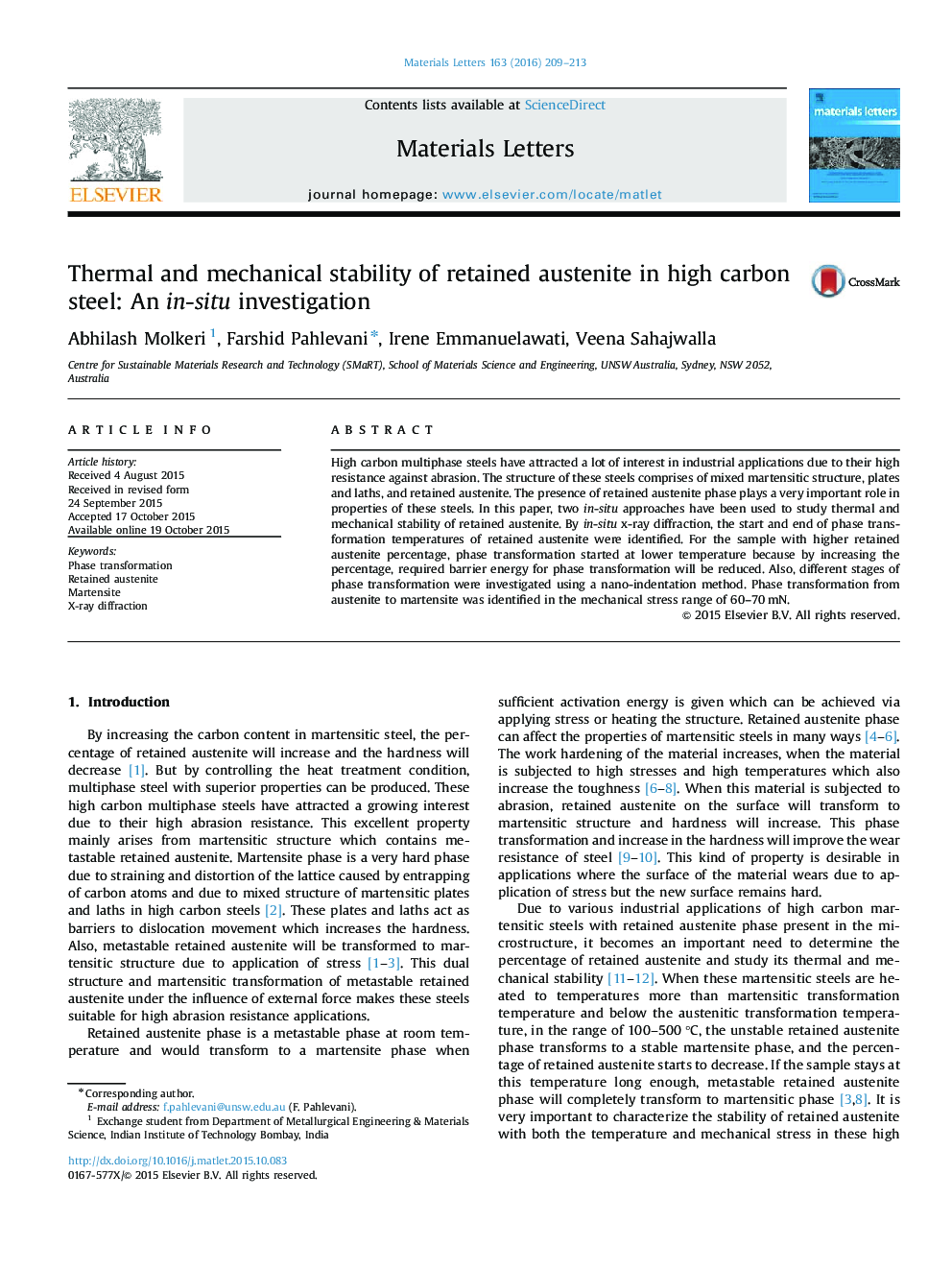| کد مقاله | کد نشریه | سال انتشار | مقاله انگلیسی | نسخه تمام متن |
|---|---|---|---|---|
| 1641774 | 1517225 | 2016 | 5 صفحه PDF | دانلود رایگان |
●Stability of retained austenite in high carbon steel has been investigated using two in-situ techniques.●By increase the percentage of retained austenite phase transformation start at lower temperature.●Different stages of deformation and phase transformation were investigated using nano-indentation technique.
High carbon multiphase steels have attracted a lot of interest in industrial applications due to their high resistance against abrasion. The structure of these steels comprises of mixed martensitic structure, plates and laths, and retained austenite. The presence of retained austenite phase plays a very important role in properties of these steels. In this paper, two in-situ approaches have been used to study thermal and mechanical stability of retained austenite. By in-situ x-ray diffraction, the start and end of phase transformation temperatures of retained austenite were identified. For the sample with higher retained austenite percentage, phase transformation started at lower temperature because by increasing the percentage, required barrier energy for phase transformation will be reduced. Also, different stages of phase transformation were investigated using a nano-indentation method. Phase transformation from austenite to martensite was identified in the mechanical stress range of 60–70 mN.
Figure optionsDownload as PowerPoint slide
Journal: Materials Letters - Volume 163, 15 January 2016, Pages 209–213
